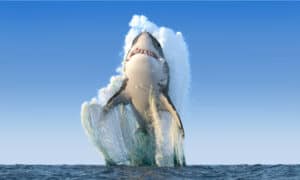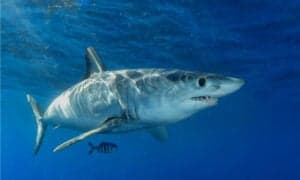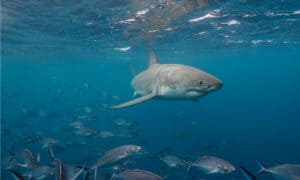Continue reading for our analysis...
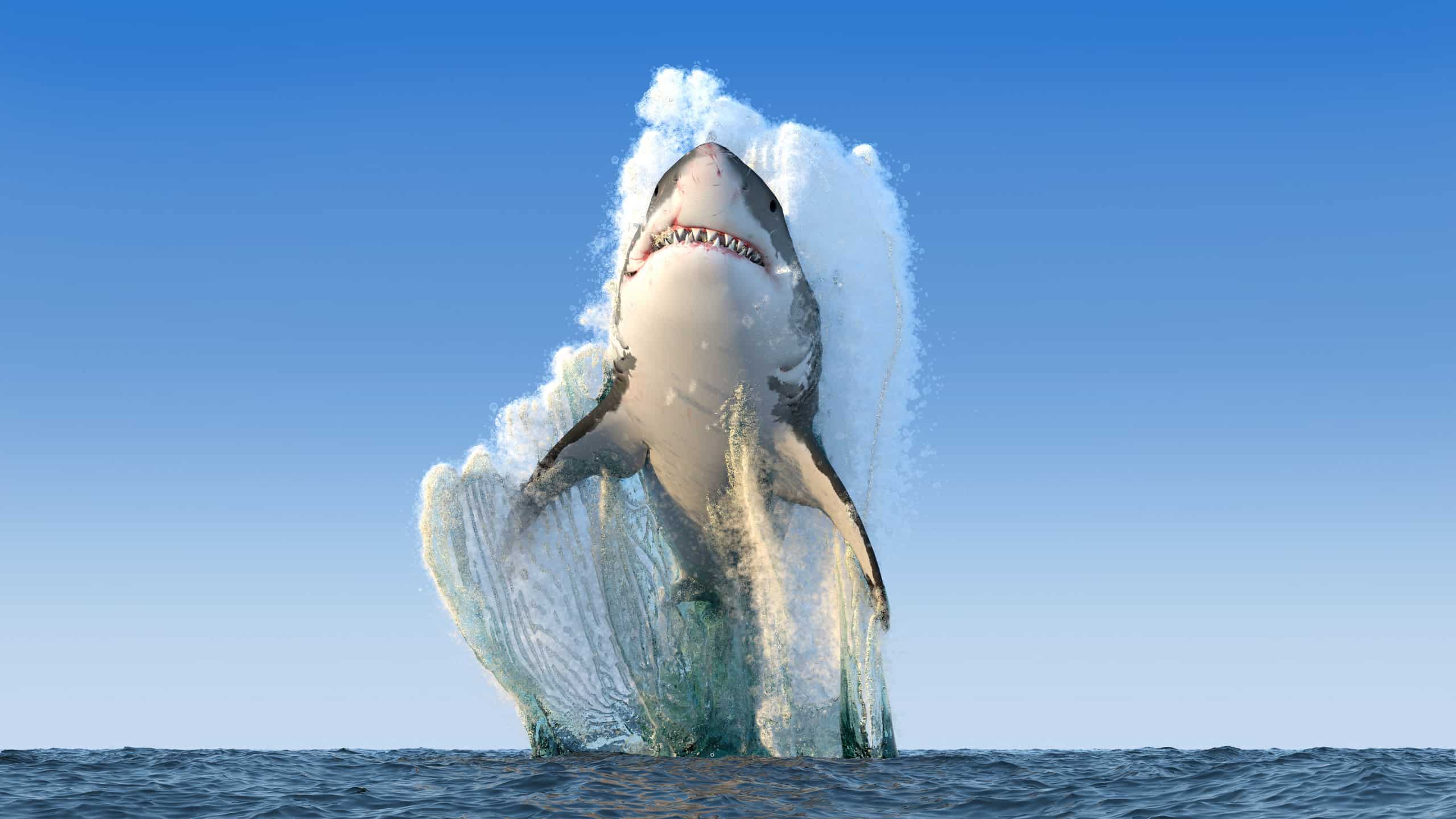
When you’re on a shark tour out of Port Lincoln, Australia, you expect to see sharks. A shark fin swirling about wouldn’t be a huge surprise since that’s exactly what you’re looking for.
But what onlookers didn’t expect to witness this day as they were out on tour with Calypso Star Charters is the shocking moment when a great white shark lunges out of the water to feast on an unsuspecting petrel bird.
The video opens with a shot of the water and some rocky land in the distance. Shark fins can be seen peeking out of the water on the center left of the camera frame, several yards from a petrel bird that’s floating atop the water.
As the shark approaches the bird (which has apparently been enjoying a few pieces of tuna used as shark bait), the bird notices and flies off a few feet away, its feet pitter-pattering on the water.
The crowd can be heard murmuring in the background as the shark approaches the bird. They’re not sure if the great white might attack—but they just keep their eyes glued to the scene. They let out a few laughs and giggles as they notice how the petrel bird nonchalantly gets away.
The shark turns around and heads back for the bird and a man behind the camera can be heard tsking, knowing that the bird is still in danger. Once again, the bird spots the shark and flies a bit higher and a bit further away this time to keep itself safe.
The video cuts to another moment of the same scene—the petrel bird is enjoying itself, floating on the water, facing to the right. From behind the bird, you can see the great white launch toward the bird as spectators bellow in surprise.

Great White Sharks Must Commonly Breach the Water When Hunting Prey
©iStock.com/ELizabethHoffmann
Commotion can be seen in the water but it’s not apparent yet what has occurred. As you see the shark’s tail splash into the water, you can make out the wings of the bird, just above the splashes. It’s attempting to fly away but it appears the shark has managed to capture its legs between its powerful jaws.
The bird continues to struggle as the crowd murmurs and shouts in disbelief. The video cuts again to a scene where the bird is closer to the boat and some chum appears to be gliding along the water attached to a string just in front of the boat.
Suddenly, the great white shark lunges out of the water—as if in a scene out of a movie—its mouth gaping open, ready to snatch the bird in one fell swoop. It succeeds and the shark can be seen chomping down on the bird, with the bird’s wing hanging out of the shark’s mouth.
The shark dives back into the water with bird and all as the crowd exclaims in surprise, amusement, and horror. A big splash can be seen and heard as the shark swims away from the boat. Onlookers return to gratified, animated expressions as they process the shocking moment they just witnessed.
Lifespan: Great White Shark
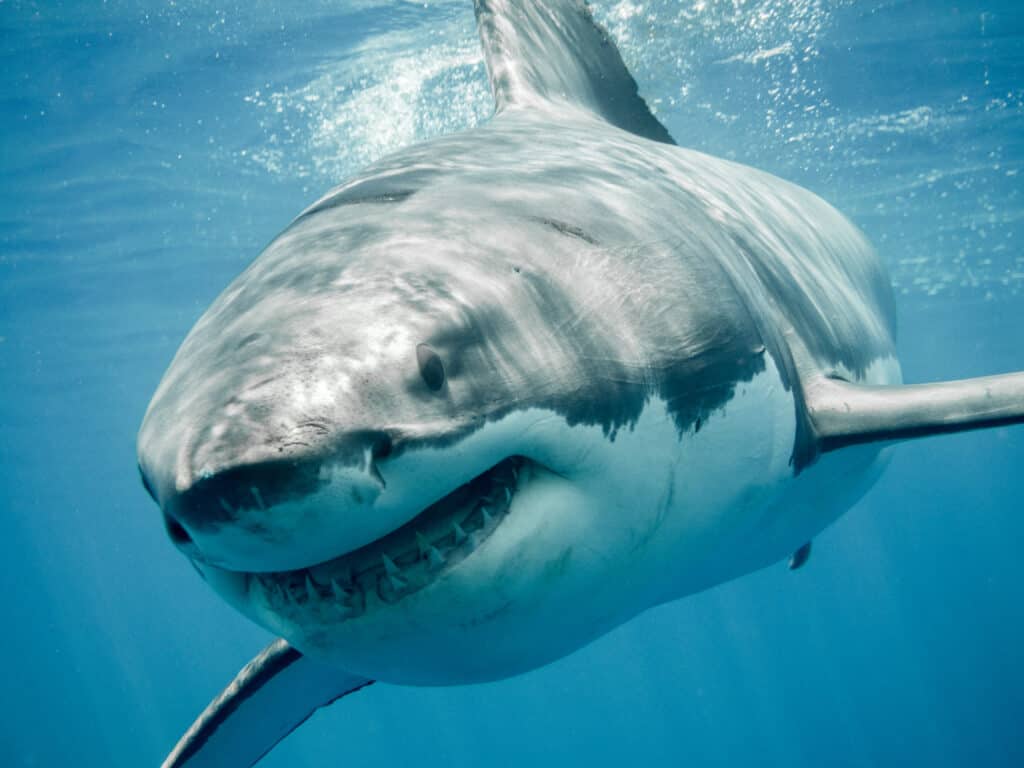
Great white sharks have been involved in over 300 attacks since scientists started recording them
©Ramon Carretero/Shutterstock.com
On average, the great white shark grows very slowly and can reach a staggering age of 70 years old in the wild. This means that mature male great whites reach peak maturity at around 26 years old and females a little older at 33 years old. A maximum age can be difficult to determine because age can range from 30 to 70 years old.
Great white sharks do not do well in captivity. In fact, the longest-living great white shark ever kept in captivity only lived 198 days.
Where Do Great White Sharks Live?
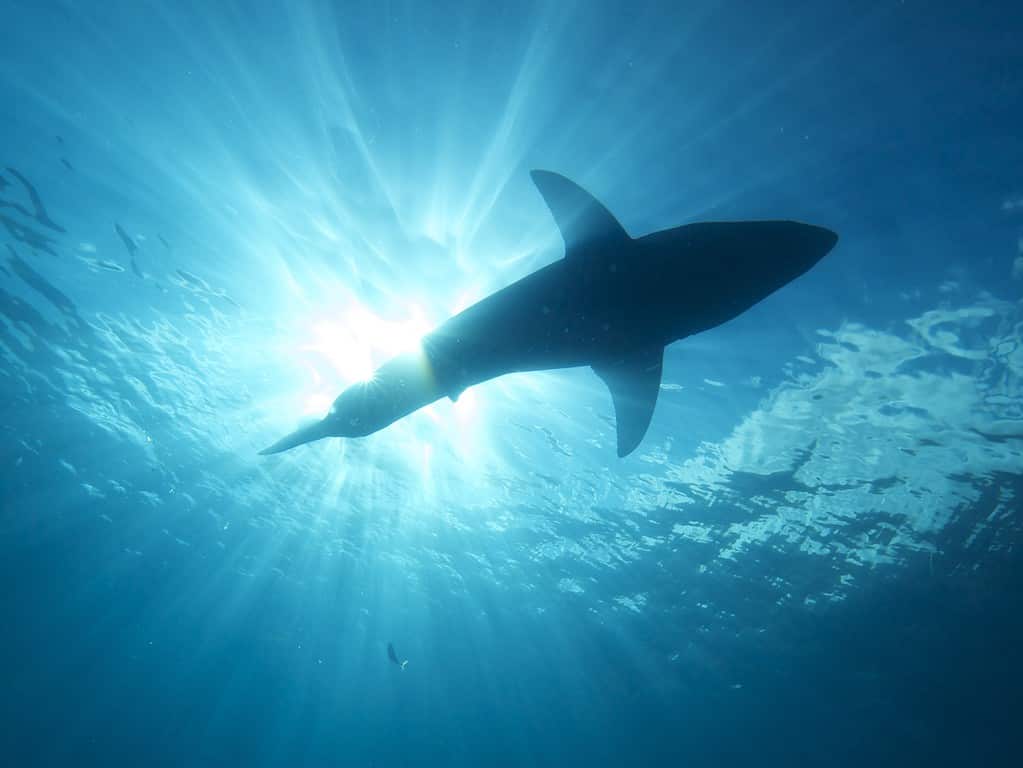
Great white sharks are found in every ocean worldwide.
©Elias Levy / CC BY 2.0 – License
Great white sharks are found in every ocean around the world. That includes South Africa, Australia, New Zealand, the North Atlantic, and the Northeastern Pacific. However, the most common place to find great whites is in the U.S. Pacific Ocean and they range from Alaska to California to Hawaii. There have also been great whites found near the Pacific coast of Mexico.
They appear nearshore and in coastal waters as well as offshore pelagic waters. They will often migrate seasonally between different habitats. Interestingly enough, their preferred habitats change with age.
Great White Sharks vs. Birds
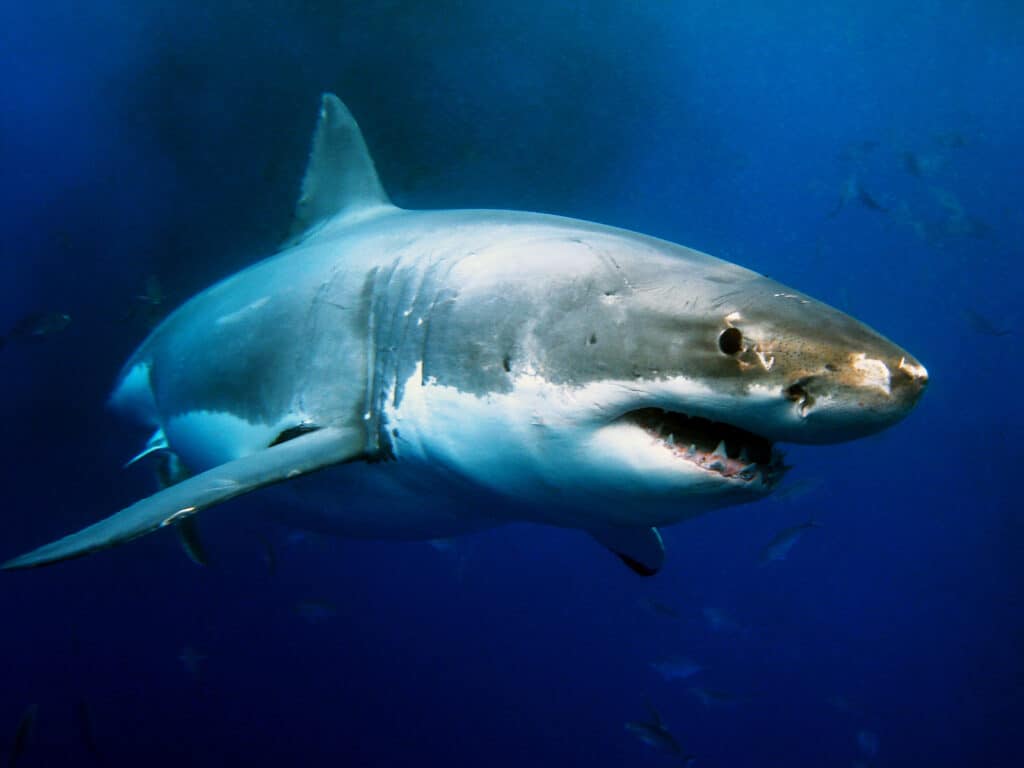
While great whites will eat sea birds, they don’t prefer it whereas
tiger
sharks are the most imposing predators of tropical sea birds.
©Alexius Sutandio/Shutterstock.com
While great white sharks are known to hunt sea birds, the most common shark to eat land-based birds is the tiger shark. While great whites will eat sea birds, they don’t prefer them whereas tiger sharks are the most imposing predators of tropical sea birds.
Do Sharks Normally Eat Birds?
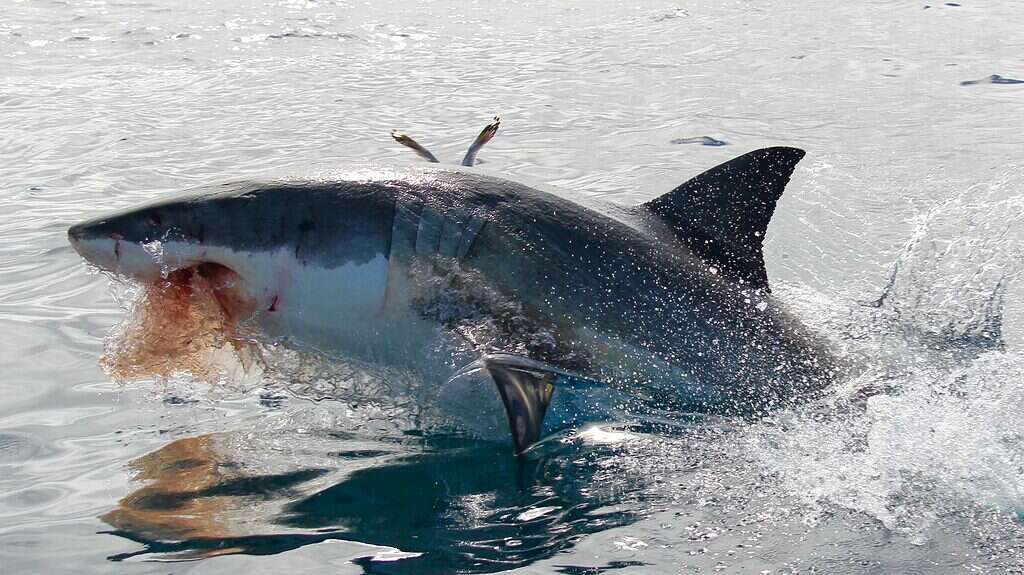
Great White Sharks have a varied diet that is made up mostly of marine mammals.
©Nicholas Ferbert/Shutterstock.com
Known as some of nature’s most naturally gifted hunters, mature great white sharks possess the strength, speed, and agility to close in on all kinds of prey both in and out of the water. Their varied diet is known to include fish, dolphins, sea turtles, and seabirds like this one. The largest portion of a great white’s prey is usually made up of marine mammals like seals and sea lions for their high-fat content.
But, as demonstrated in the video below, there is hardly any seafaring creature that is totally safe from the jaws of this mighty predator. The types of birds on a shark’s menu have been a topic of great interest for researchers. A relative of the great white, the tiger shark, has been observed dining not only on seabirds like this petrel but also on songbirds, like those you might find in your backyard.
Shark Out Of Water
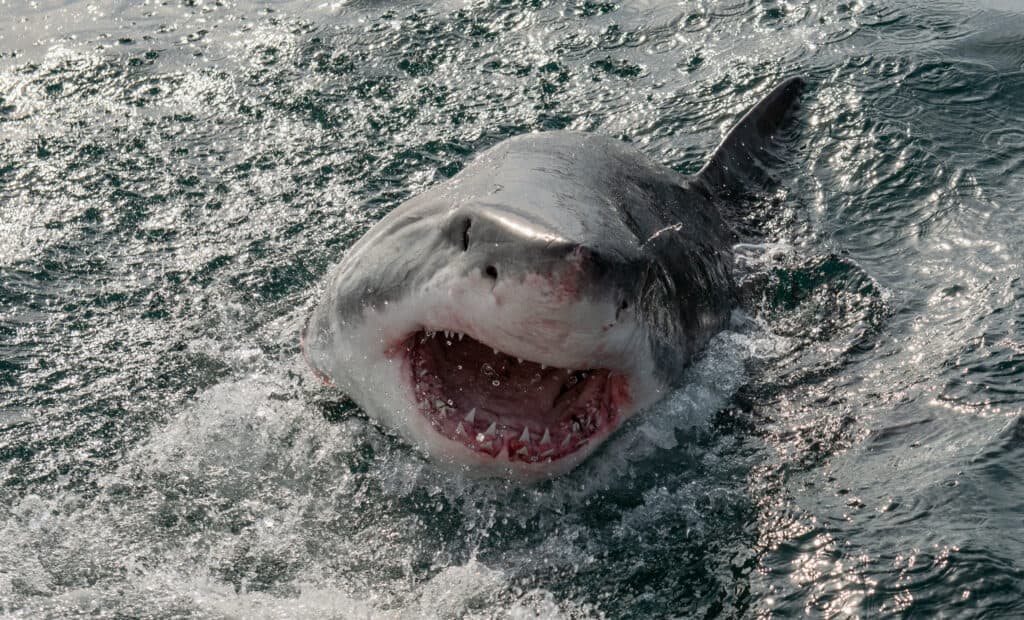
These sharks have torpedo-shaped bodies that are sleek and powerful, able to accelerate from a low cruising speed to a sudden flurry of activity.
©Sergey Uryadnikov/Shutterstock.com
A hunting technique attributed to the great white shark is what is known as breaching. Breaching is a surprise attack where the shark will launch themselves at their prey from below at speeds of 40 miles per hour, which then propels them fully out of the water.
This breaching behavior appears to only happen in South Africa and is much more common around Seal Island in False Bay. The combination of deep waters, which lets the sharks go undetected to the seals, and the smaller-sized fur seals make it an ideal location for the great whites.
The best time to watch see a breaching great white is from May to September.
Great White Shark Population – How Many Are Left In The World?
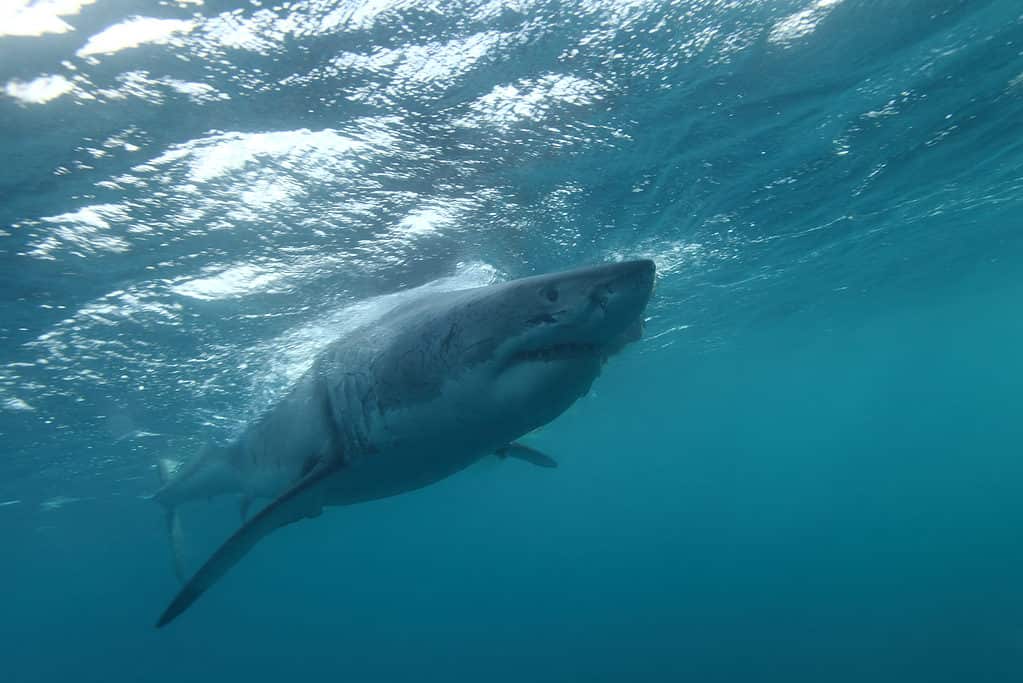
There are fewer than 3,500 great white sharks left in the world.
©iStock.com/Alessandro De Maddalena
Great white sharks thrive in temperate and tropical coastal waters. These sharks tend to cluster along the coasts of South Africa, the North Atlantic, the North Pacific, Australia, and New Zealand. While rare, there are also populations around Guadalupe Island and Hawaii.
Despite being found in various spots around the world, there are actually fewer than 3,500 great white sharks left in the world and that number is decreasing across the world. This is having a big effect on the ocean’s inhabitants as these apex predators become more and more scarce.
How Large Are Adult Great White Sharks?
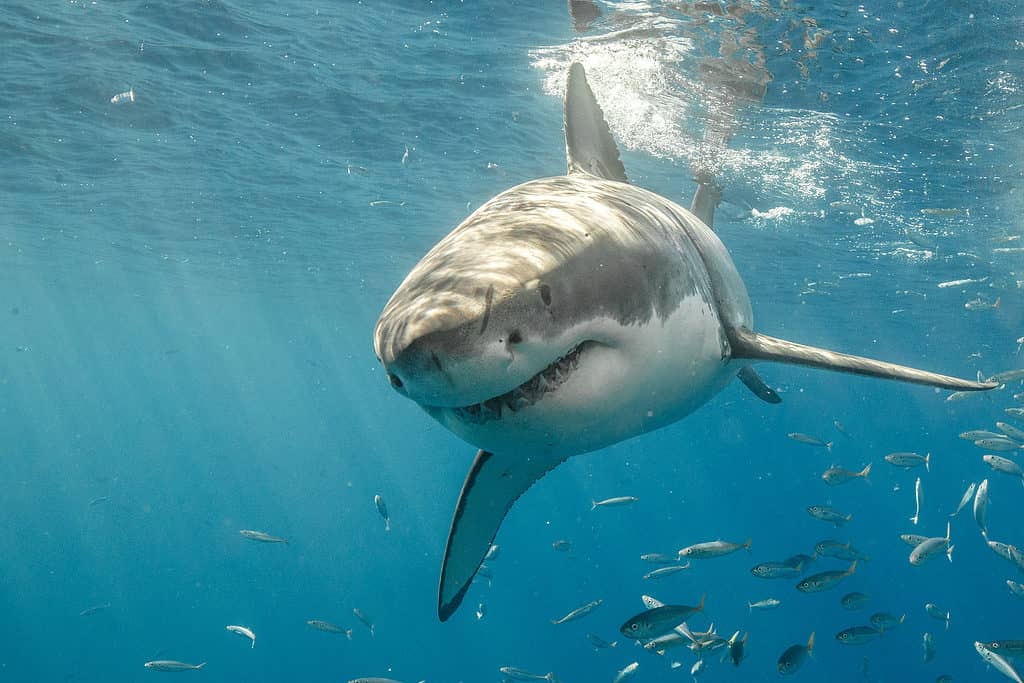
The largest great white on record is Deep Blue, who is over 20 feet long and weighs an estimated 2.5 tons.
©iStock.com/ShaneMyersPhoto
The largest great white shark can reach lengths of up to 20 feet, although the majority are smaller than this. Females are generally larger than males, with the average size of a female great white shark reaching between 15-16 feet, and the average size of a male reaching between 11-13 feet. The largest great white on record is Deep Blue, who is over 20 feet long and weighs an estimated 2.5 tons.
Think you know Sharks? Are you in the top 1%? Don’t miss our brand new Shark Quiz.
More from A-Z Animals
Thank you for reading! Have some feedback for us? Contact the AZ Animals editorial team.




